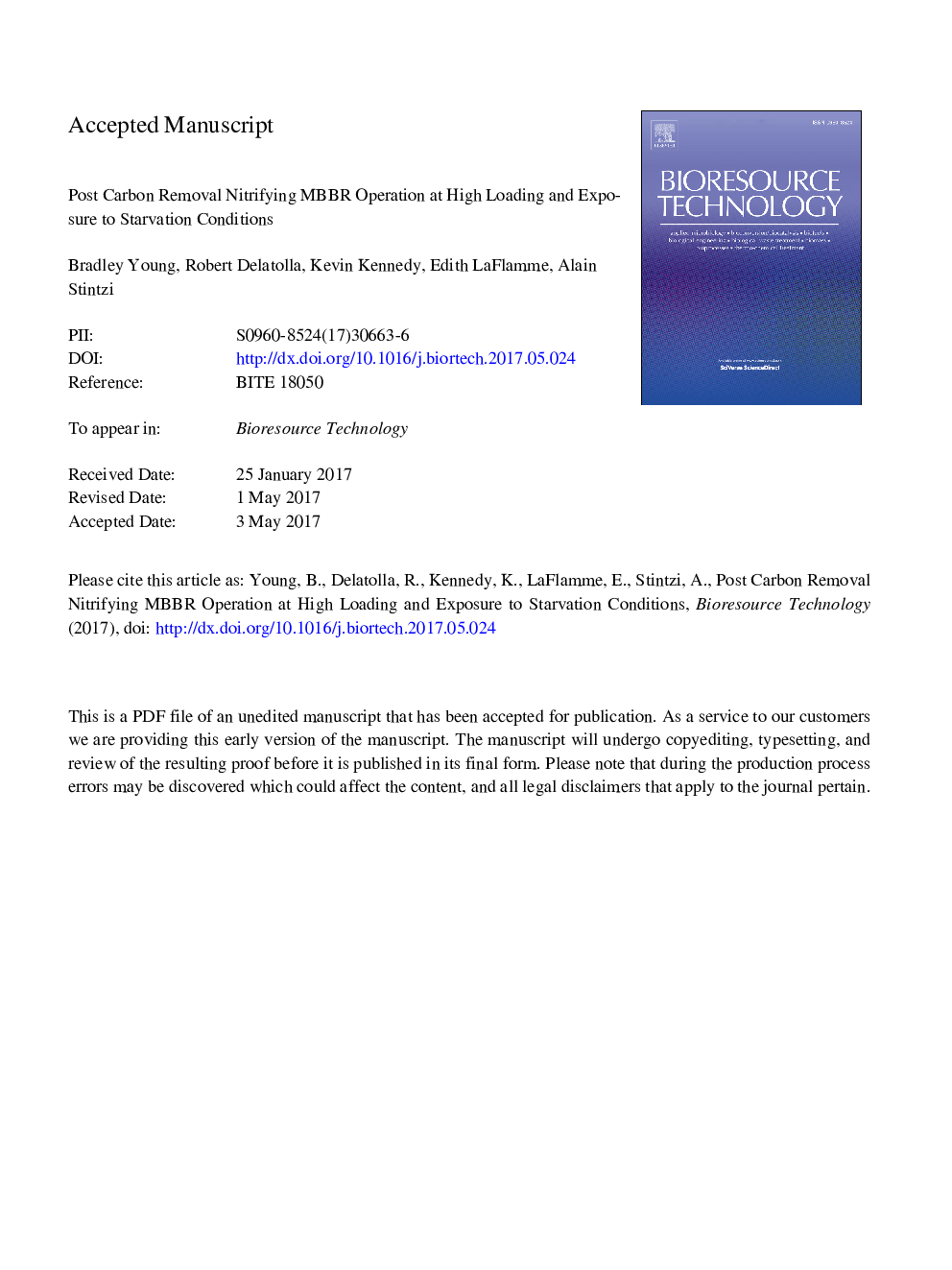| Article ID | Journal | Published Year | Pages | File Type |
|---|---|---|---|---|
| 4997142 | Bioresource Technology | 2017 | 34 Pages |
Abstract
This study investigates the performance of MBBR nitrifying biofilm post carbon removal at high loading and starvation conditions. The nitrifying MBBR, treating carbon removal lagoon effluent, achieved a maximum SARR of 2.13Â gN/m2Â d with complete conversion of ammonia to nitrate. The results also show the MBBR technology is capable of maintaining a stable biofilm under starvation conditions in systems that nitrify intermittently. The biomass exhibited a higher live fraction of total cells in the high loaded reactors (73-100%) as compared to the reactors operated in starvation condition (26-82%). For both the high loaded and starvation condition, the microbial communities significantly changed with time of operation. The nitrifying community, however, remained steady with the family Nitrosomonadacea as the primary AOBs and Nitrospira as the primary NOB. During starvation conditions, the relative abundance of AOBs decreased and Nitrospira increased corresponding to an NOB/AOB ratio of 5.2-12.1.
Related Topics
Physical Sciences and Engineering
Chemical Engineering
Process Chemistry and Technology
Authors
Bradley Young, Robert Delatolla, Kevin Kennedy, Edith LaFlamme, Alain Stintzi,
